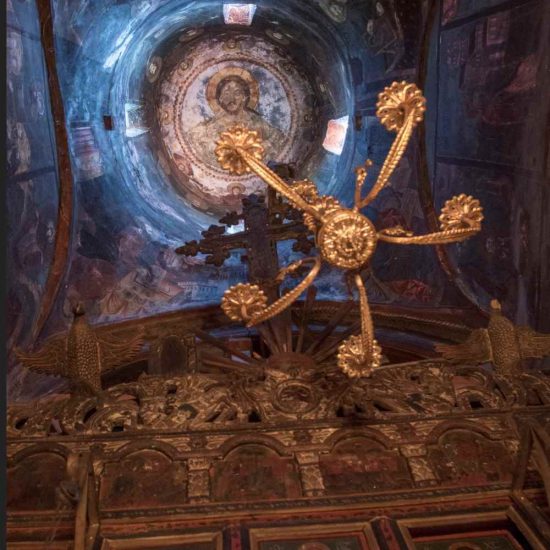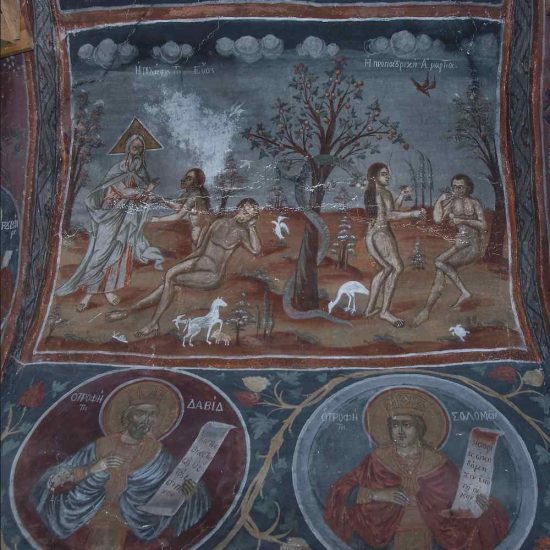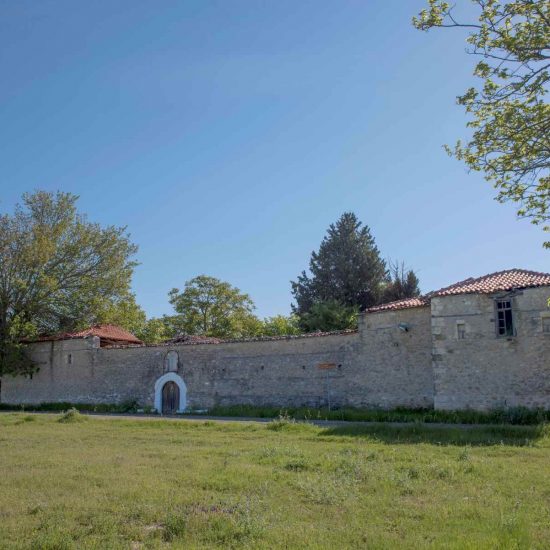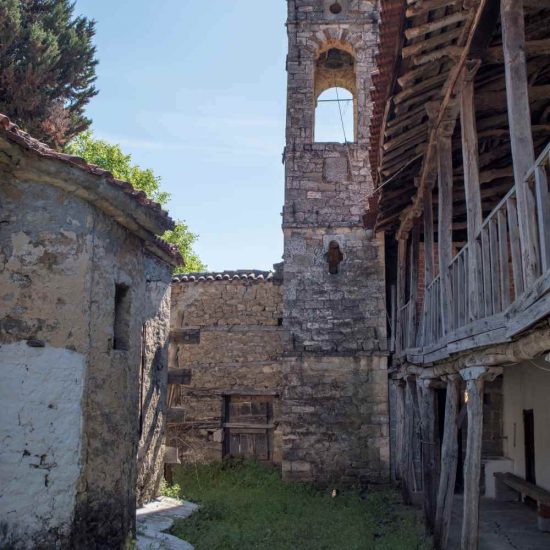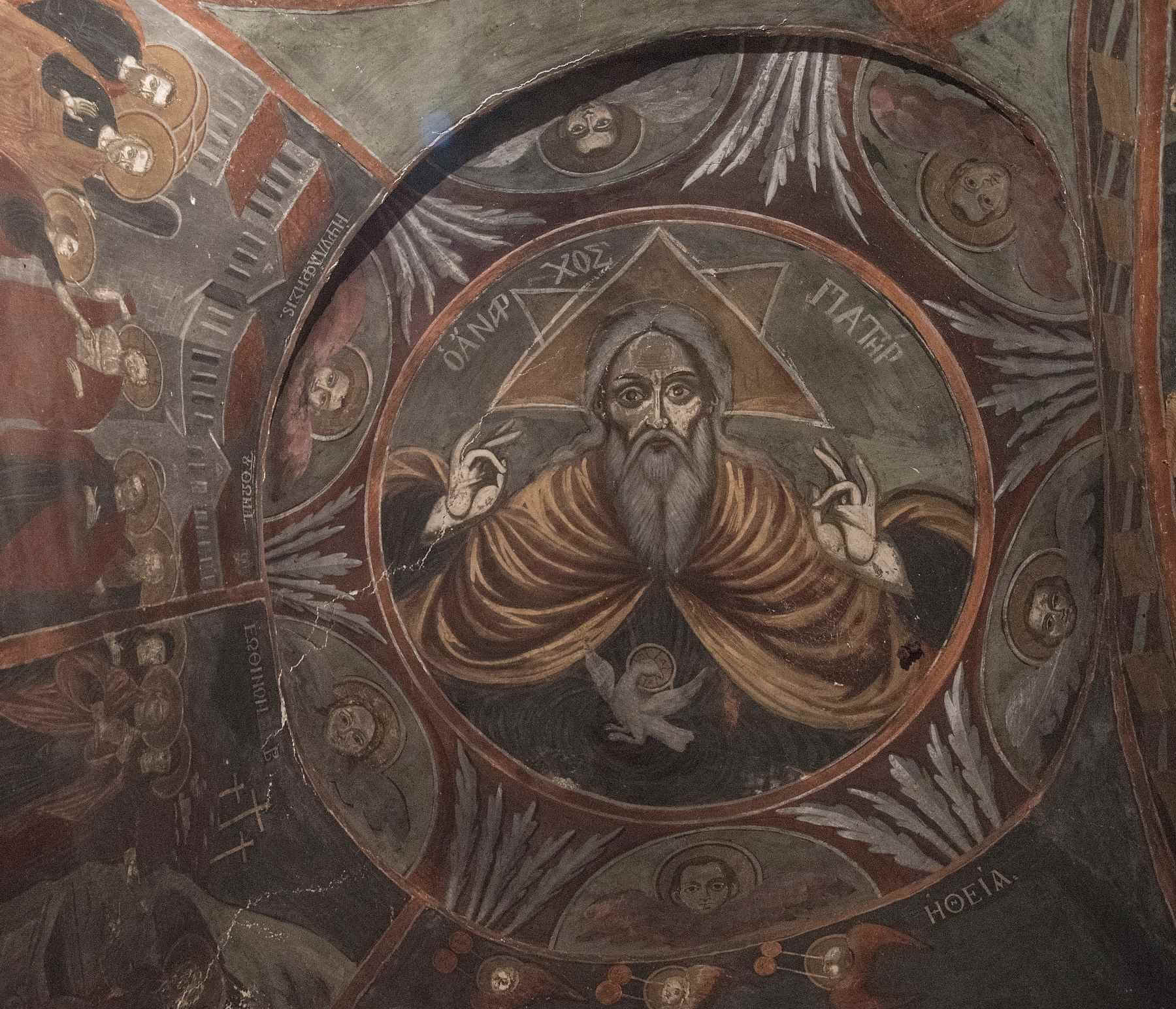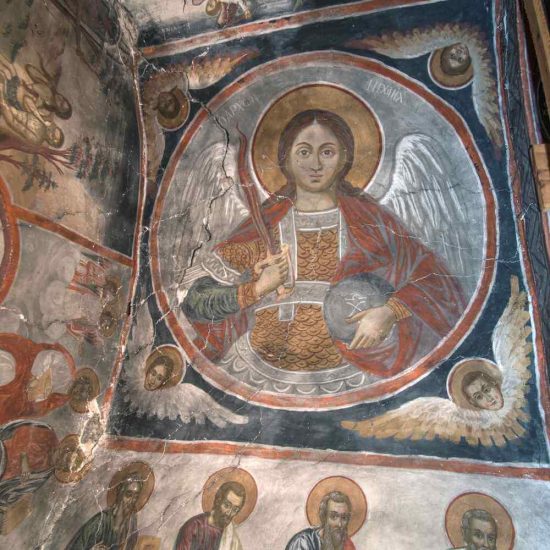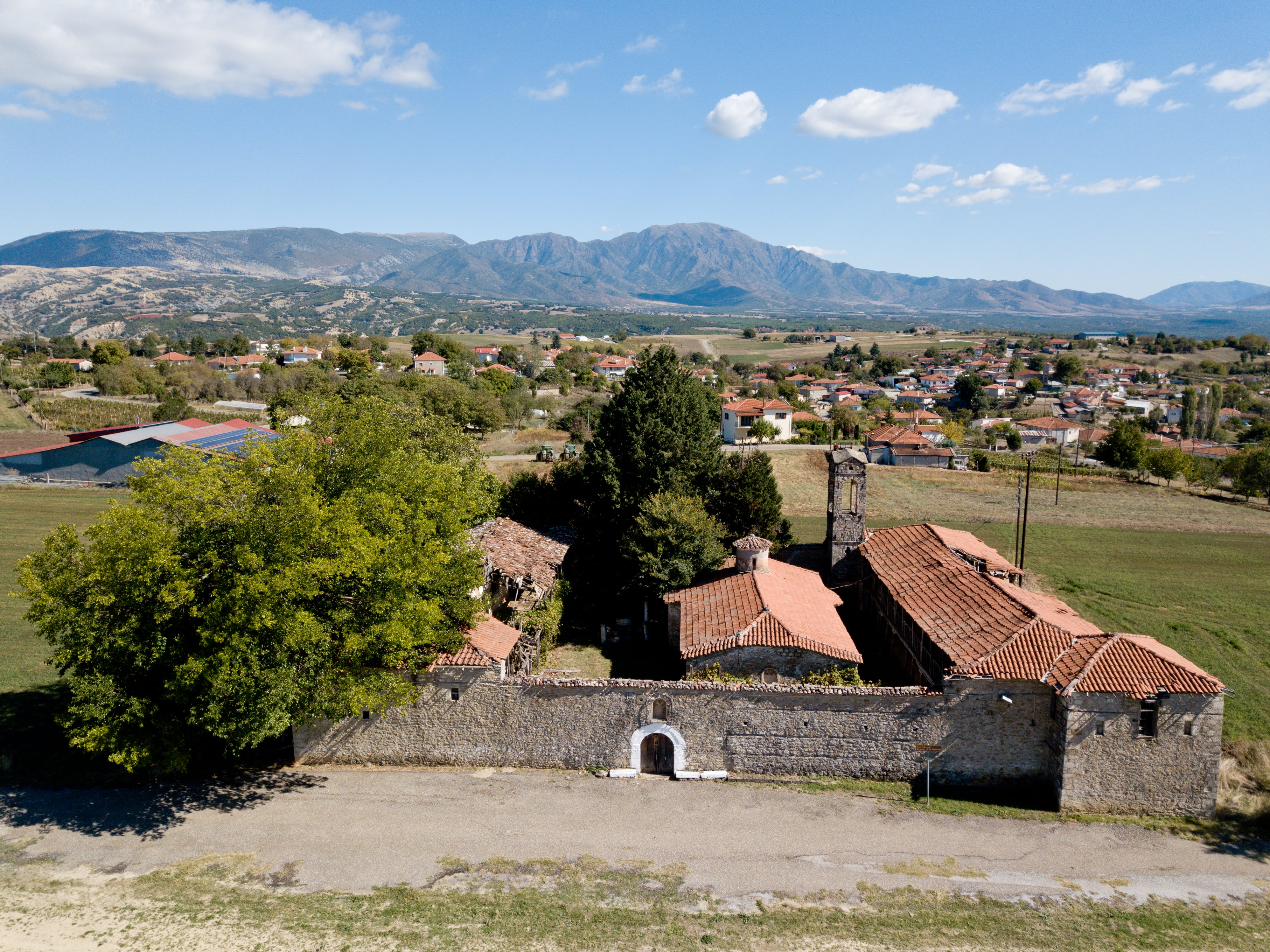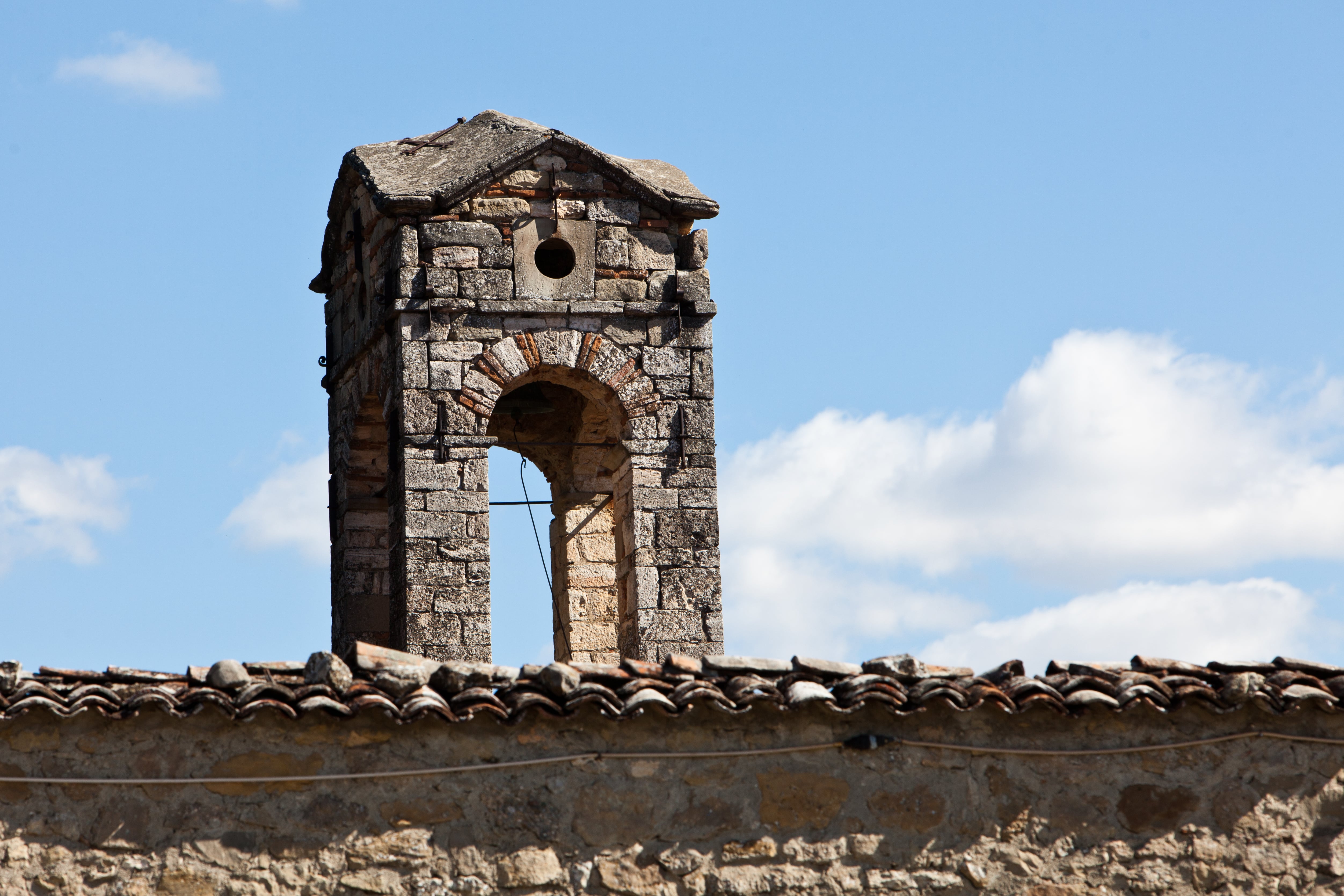Monastery of the Archangels (Taxiarchis)
per person
The Monastery of the Archangels, which is historically also referred to as the Monastery of Kousko, is located west of the homonymous settlement, close to Aliakmon river and on the road axis of the Egnatia Odos towards Igoumenitsa. In a surviving Cashbook of 1834, which includes historical information regarding the Monastery’s financial capacity, the transactions, the commercial roads and the nearby Islamized settlements, it is mentioned that the construction works were completed in 1833-1834. This fact is also being verified by the testimony of two inscriptions dating to 1833, engraved in stones in the northeastern part of the complex and in the outer corner of the east side of the courtyard. The beginning of the monastery’s complex construction can be placed before 1813 to 1815 according to a registration of 1813 in the Cashbook and to a testimony regarding an inscription of 1815 above the entrance door of the katholikon. A recorded recollection in a Menaion (1777) of the Monastery states that it opened in 1828. It seems, however, that the Monastery of the Archangels was founded in an older monastery’s place, based on the testimony of a marble inscription dating to 1768, located on the east wall under the cornice of the temple roof.
The Monastery complex of the 19th century still exists in its entirety: the courtyard of the monastery, a courtyard of rectangular plan, plays a “fortress” role; on the north and south side there are respectively two two-storey cell transepts that include the spare room, the kitchen, the oven and auxiliary rooms. The main entrance of the Monastery is located on the west side, a smaller entrance on the east as well as the bakery. On the northeast side of the cobbled courtyard is a well with a four-pitched roof that rests on four columns with square capitals. On the east side there is the bell tower, which was built, according to a stone inscription, in 1897 by craftsmen from the Kalloni village. In the center of the complex there is the katholikon. It is a three-aisled vaulted basilica with a dome and transverse transepts. It belongs to the inscribed cruciform Athonite type with a Byzantine origin that continued to be used in post-Byzantine church building. The main entrance in the katholikon is located at the western end of the southern wall of the main church, it has an anthropomorphic shape and an interesting stone carving decoration with rosettes, a cross and two-headed eagles. There is, also, a second entrance with a semicircular lintel on the west wall of the narthex, above of which the Brigadiers in a shallow arch are depicted. The sanctuary, the main part of the church and the narthex are marked with the formation of different levels. The monastery also functioned as a spa-enclosure, as chains that held the mentally ill still exist in the narthex.
The inside part of the church is entirely painted. According to the ownership inscription on the inner lintel of the south entrance, the mural decoration was completed on April 3, 1848, during the reign of Metropolitan Ioannikios, by the brothers Nikolaos, Ioannis and Vassilios. The hagiography process lasted at least nine months based on the recorded recollection of the three painters dated July 26, 1847 in the Octoechos (of 1728) of the church. According to other sources, the painters come from the well-known Bacola family from St. George village or Tsourhli of Grevena. From the iconographic program, in the spirit of the Macedonian school of hagiography, stand out the Circle of Genesis and mainly the punishments of the infernals, the full-length depictions of the founders of monasteries, Saint Nicanor of Zavorda Monastery in Deskati and Dionysios in Olympus, the homonymous monarch Apostles Peter and Paul, who hold models of churches, as well as the new martyr Saint George of Tsourhli. An earlier phase of mural painting is revealed by a written inscription in the Ascension Day, on the eastern wall of the sanctuary, dating to 1834. Written inscriptions-prayers of the villagers without reference to the year are found in the representations of Saints Demetrius, George and Stephen. The central wood-carved and gilded part of the iconostasis dates to the end of the 18th century, while newer interventions are wooden parts with painted decoration: inscriptions in the northern part of the iconostasis point out the date 1846 and the name of the painter Ioannis from Tzourhli. Also, in two despotic icons, the year 1856 is written. The existence of a library in the Monastery is probable based on a code snippet of 1787, with mourning for the plague epidemic that broke out in the city in 1778, and according to testimony for a manuscript copy of the Souda dictionary kept there until 1957.
Source/References
Accessibility: The monument is closed to the public because it needs maintenance work.


